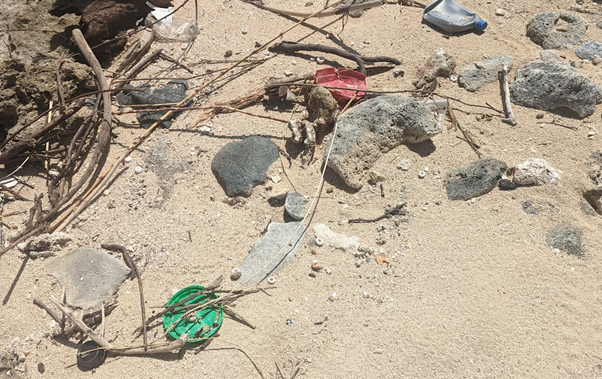Microplastics are an incredibly widespread pollutant, found buried in Antarctic sea ice, inside the guts of marine animals inhabiting the deepest ocean trenches, and in drinking water around the world. More than 120 trillion microplastics (i.e. plastic particles under 5 mm) are estimated to have entered the global ocean.
In the ocean, microplastics are rapidly colonised by diverse microbial communities, a community that is termed the “Plastisphere”. However, the novel microbial communities that live on discarded plastic in the environment have been suggested to serve as a pool of both pathogenic and antimicrobial-resistant (AMR) bacteria.
In a new study, Plymouth Marine Laboratory and the University of Exeter investigated selective colonisation by a sewage community on environmentally sampled microplastics, involving three different polymers, sources and morphologies, alongside a natural substrate (wood), inert substrate (glass) and free-living/planktonic community controls.
This study showed that marine plastic substrates served as a hub for the selective growth of bacterial communities responsible for diseases in both humans and animals. Compared to controls, polystyrene and wood were found to enrich AMR bacteria, and bio-beads enriched strains of Escherichia coli, which can cause diarrheal illnesses.
Significantly, while under ‘normal’ circumstances the community composition is mostly determined by the external community and environment, all particles were exposed to the same environment in this study, suggesting that the selective colonisation observed is a result of substrate-specific components. Additionally, as there was no difference in the size of the particles used in this study, this suggests that there are specific differences in particle characteristics that affected the attachment of AMR or pathogenic bacteria.
There is a potential risk that the attachment of bacteria to plastics may make them more likely to become resistant to antimicrobial treatment. The lead author of the study, Emily Stevenson, noted that “By identifying particles of greater concern for AMR risk, we can recommend improvements to waste management or sewage treatment, with the aim to reduce emissions of these materials into the environment.” Efforts to reduce the introduction of bio-beads into the environment was emphasised as particularly urgent ,“considering their effect on E.coli communities”.
Further research is needed to fully understand whether microplastics pose a greater risk than natural debris in supporting these disease-causing or drug-resistant microbial communities.
